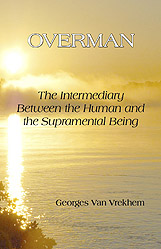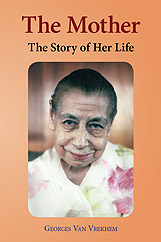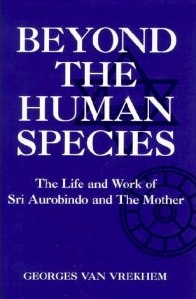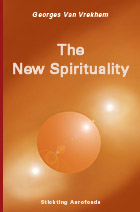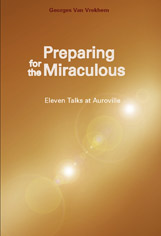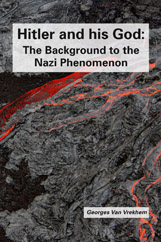Patterns of the Present is a profound and inspiring account of the present situation of mankind and the world it lives in. On the threshold of the new millennium, countless pages have been written on the meaning of our world and its possible development. The conclusion in most cases was depressing – man would become an automaton in a sci-fi world. The author puts the present situation of humanity in the perspective of the evolutionary vision of Sri Aurobindo and The Mother. The result is a positive interpretation of the global situation.
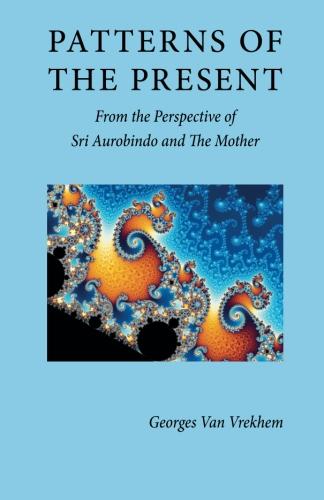 The meaning of history, the globalization of our planet, the values represented by East and West, their meeting and reciprocal fertilization, the future evolution of mankind – all these topics and more are presented here in a fresh, often surprising, perspective.
The meaning of history, the globalization of our planet, the values represented by East and West, their meeting and reciprocal fertilization, the future evolution of mankind – all these topics and more are presented here in a fresh, often surprising, perspective.
Contents:
1. The Big Picture
2. The Avataric Field
3. East and West
4. Reason on Trial
5. Science, Scientism, Modern Technology
6. The Supramental “Catastrophe”
7. The Future of Humanity
Patterns of the Present
by Georges Van Vrekhem
200 pages
ISBN 9781478144557
Amazon
Kindle eBook
Apple iTunes
In the US, books can also be ordered from Matagiri.
Excerpt:
Grumbling Humanity
… the quite imaginary perfection of the ideal past …1
– Sri Aurobindo
The crux of the matter is that we are living in a world which we create ourselves, and that we depend on its shortcomings instead of depending on its qualities.2
– Andrei Tarkovsky
Reading the commentators on the present times – philosophers, academic luminaries, journalists, columnists, opinion makers of all kinds, religious leaders … – is like wading through a swamp of discontent. This is an era of transition, indeed very much so. But how come that the present world is interpreted so negatively by the people living in it? Have considerable parts of humanity ever had it better? Are the glasses of “those whose temperament and imagination dally lovingly with an ideal past”3 not too rosy-coloured because of a lack of perspective and an insufficient knowledge of the past resulting in an idealisation of it?
“Actually, people are never happy … The reason probably is that Western man never has known how to live in the present”, writes Michel Winock. “All of us are living with the opinion that the past was better. In most cases this is nothing but an illusion. As nowadays we can interrogate with some precision the main currents of public opinion, we can measure the load of dissatisfaction weighing on the people, even when they become richer, live to a greater age, and acquire an amelioration of their living conditions their grandparents could not have dreamed of. For nothing is more difficult than to live in the present tense: the past tense and, better still, the conditional tense save us from the worries and uncertainties of everyday life. Nothing is more dreadful than to live in the instability of days following one after the other, the near future always remaining insecure. The very same persons who, when interviewed in the past about their existence, denied its advantages, imagine today that same past as lost happiness. Yesterday is always better than today. Nostalgia is a malady of the senile.”4 – “The sigh of the extreme conservative mind for the golden age of the past, which was not so golden as it appears to an imaginative eye in the distance”, writes Sri Aurobindo, “is a vain breath blown to the winds by the rush of the car of the Time-Spirit in the extreme velocity of its progress.”5
“I find this contemporary cult of pessimism scandalous”, writes Christiane Collange, a French journalist, in her Merci, mon siècle (Thank you, my century), in which she thanks the 20th century for all the marvels and ameliorations it has brought into so many lives. She fully agrees with Michel Winock: “Happiness does not have a very good reputation with us; optimism is accused of irresponsibility; enjoyment, small or big, does not yet occupy the place it deserves to have; satisfaction in its various forms hardly dares to be experienced and to show itself in broad daylight. On the contrary suffering, difficulty and bad luck give right to social consideration; sacrifice and austerity are still considered to be exemplary; pessimism is widely publicised.”6
Just one example of the current evaluation of one of the wonders of the present world: television. “Television alienates the mind, shows everyone the same, transmits the ideology of those who produce it, corrupts the imagination of the children, reduces the curiosity of the adults, puts the thinking mind to sleep, is an instrument of political control, dictates the way in which we think, manipulates the information, imposes dominant cultural models (not to say bourgeois models), shows systematically only one part of reality omitting the urban classes, the middle classes, the tertiary classes, life in the countryside, the world of the labourer, marginalizes the regional languages and cultures, causes passivity, destroys the interpersonal relations within the family, eradicates the reading habit and all ‘difficult’ forms of culture, incites to violence, to vulgarity and pornography, prevents the children from becoming adults”, etc., for a whole page more. This sorry litany has been assembled from statements in diverse publications by the French philosopher Luc Ferry and published in his book L’Homme-Dieu.7 Similar litanies could be made about the radio, the computer, the telephone, the automobile, the airplane, and the cinema.
It might therefore be interesting to give one or two examples of how things were in times gone by. We will not choose what would now be considered the “inhuman” instance of the “care” for the babies as practised let us say less than two centuries ago, a time when child mortality was a fact of everyday life, and also documented in the same book by Ferry. Or the medieval relation between husband and wife, which according to contemporary standards should be one of mutual appreciation if not love. Or the way the victorious party in whatever kind of past war was generally supposed to behave towards the defeated. Or the way household personnel and workers, not to speak of the serfs, were treated. Some well-documented history lessons on these subjects might give the earthlings of the present day a more realistic understanding of life in the past and of the dissimilarity with their own normal, contemporary, “human” world.
We choose, firstly, a brief evocation of life in Elizabethan London. “Most Elizabethans have bad breath, rotting teeth, constant stomach disorders, and scabs or running sores all over their skin. Things are no better on a public scale. The city ditches are used as toilets. Butchers throw dead animal carcasses into the street to rot. Housewives nonchalantly toss putrid garbage into the river [Thames]. Poor people are buried in mass graves, and the bodies of the rich, lying beneath the church building in burial vaults, force the congregation to evacuate because the stench of the decomposition is too strong …”8 Our second example is a description of the river Seine in Paris as recently as 1880: “The banks of the Seine presented us with a sad view: the river, full with waste of all kinds (vegetables, hair, animal carcasses, etc.), was really abhorrent; a grey slime, in which that organic refuse got stuck, accumulated all along the border; it caused an active fermentation resulting in gas bubbles of an often considerable dimension.”9
That pessimism is ingrained in man is understandable if we consider his nature. He incarnates in body after body at a stage of evolution that still is completely problematical, in a time of transition when most of his physical and psychological composition still is predominantly animal-like. The dominant level of his nature – and this is still very little understood – is his subconscious, so much so that it may be said that the conscious part of his personality is not much more than a few leaves floating on a mud pool. It is the subconscious that determinates his vital being, full of fright, insecurity, egoism, aggression, cruelty. And it is his vital being that predominantly determines his mentalisations and thinking. Add to that a physical body subject to injury, illness and death, subject to a sexual urge that may be unsubduable, confused and insecure, and a life in the company of beings in the same tangled situation – and one has more than sufficient reason for a sort of ineradicable constitutional pessimism. Sri Aurobindo wrote that this condition humaine (human condition) was susceptible to the “downward gravitation”, the easy giving in to the burden and even evil of life, contrary to the upward movement of any idealistic human endeavour and the spiritual effort.
Another factor contributing to the pessimism and negative evaluation of the present period is that the appreciation of its values is in most cases the opinion of the mass, of average man. In our time “elitism” is a dirty word. It is an assumption of postmodernism that “high” and “low” have to be mingled, and therefore that mass culture is what suits our era. It is rather astonishing that many of the cleverest heads of our time, mostly French proponents of what is known as “structuralism”, found pleasure, authority and power in contending that the individual, the subject, is dead. Often quoted words in this context are the very last phrase of Michel Foucault’s The Order of Things: “[If the thesis of this book is correct] then one can certainly wager that man will be erased, like a face drawn in sand at the edge of the sea.”10
Structuralism, like all important philosophical movements, was based on a kernel of truth, but, like all important philosophical movements, a truth deformed by its exaggeration and exclusiveness. “By individual we mean normally something that separates itself from everything else and stands apart, though in reality there is no such thing anywhere in existence; it is a figment of our mental conceptions useful and necessary to express a partial and practical truth”, writes Sri Aurobindo. But he adds: “It is necessary to insist, that by the true individual we mean nothing of the kind but a conscious power of being of the Eternal, always existing by unity, always capable of mutuality. It is that being which by self-knowledge enjoys liberation and immortality.”11 Alas – and here we touch again upon the fundamental flaw in the Western world view and the vain groping of its thought for truth, reality, reliable fundamentals – the essential structure of the human being and the manifestation it is part of remain unrecognised, and therefore constitute the enormous underwater part of the iceberg while Western thought and comprehension dance, more and more in desperation, on the surface of its visible top.
In contrast to the above, thus forming one of the many apparent contradictions in this transitional time, is the fact that humanity enjoys at present, especially in the West, one of the high seasons, if not the highest ever, of individualism. “There is no doubt that the right to be absolutely oneself, to enjoy life at its fullest, is inseparable from a society that has posited the free individual as a cardinal value … We are experiencing a second individualist revolution … It is everywhere the search for an own identity and no longer universality that motivates the social and individual actions … Hedonist and personalist individualism has become lawful and does not meet with opposition any longer … This is a personalised society where the important thing is to be oneself … The postmodern culture is a vector for the widening of individualism …” All these quotations are from a widely influential book by Gilles Lipovetsky L’Ère du vide – Essais sur l’individualisme contemporain (The Era of Emptiness: Essays on contemporary individualism) first published in 1983.12
The individual, however, seems scarcely capable of bearing the freedom it has gained and which is, as we have seen in a previous chapter, the chief realisation of the Western effort. Isn’t it amazing that everything man has been dreaming of throughout all of history becomes problematic once he gets it – for example unheard of material possibilities and individual freedom to a high degree? “No political ideology is able to fire the masses any longer. Postmodern society has no more idols or taboos, no glorious image of itself, no animating historical project. Henceforward we are dominated by emptiness,”13 writes Lipovetsky. An explanation may be that material well-being as such is no fulfilment of the needs and the growth of the soul, and that full individuality can be realised only when the human being will be recognised for what it is, in all its aspects. This should be kept in mind when reflecting on the generalised malaise humanity is subject to at a time that, materially, people never had it so good.
“Peace we do not have, but we do have abundance!” says the Frenchman Jacques Lacarrière. “I often maintain that in a supermarket of today one can find the near-totality of what the human being has dreamt to have since the time he was living in caves.”14 We listen once more to the British historian Eric Hobsbawm: “Let us not forget that, measured by whatever standard, the majority of the individuals live better at the end of the 20th century, this in spite of the terrible catastrophes that occurred in it … After all, India has not known a famine since 1943. Apart from a few rare exceptions, the human beings no longer have to live with hunger in the major part of the world. This means that, for the very first time, the production is up to the demand of the mass of the population. In the developed countries people live no longer in the age of the elementary necessities and can choose what they want instead of having to choose between having nothing to eat and not having a roof over their head. They do not have to worry anymore about their daily bread, except in order to decide whether they prefer a sandwich or a toast with cooked or smoked ham on a bed of fresh or dry tomatoes … The productive growth and the availability of the riches are enormous, and the majority of the world population has benefited from them. This is a characteristic of the 20th century that has to be taken into consideration when one evaluates the good and bad aspects of an era …”15
Christiane Collange, with the practical eye of a journalist, a housewife and a grandmother of twelve, thanks the 20th century for the following reasons: the improvements in the field of health; the lessening of the burden of daily life; the liberalisation of the human relations; the revolutions in the field of communications; the improvements in transportation; the heightening of personal well-being; the better opportunities for children; the widening of the cultural availabilities; and the choices women have acquired. It is an impressive list – still more impressive when compared to the lives of our ancestors.
“In contrast to the picture propagated by certain media”, she writes optimistically, “materialism, violence and hatred are not omnipresent in our society; on the contrary, the indications of the ‘new age’ are everywhere and signal an intense need to find meaning again, to develop affective ties of a better quality, rather than to wallow in consumption or to immure oneself within a hardened egocentrism. All the observers of our mentalities discern this new tendency towards a higher human value.”16
She is not the only one to report positive signs. Even Gilles Lipovetsky writes: “The crisis of the modern societies is in the first place cultural or spiritual”; and: “Simultaneously with the revolution of the information science, the postmodern societies experience an ‘inner revolution’, an immense ‘change of consciousness’ (‘awareness movement’), an unprecedented dedication to the knowledge and accomplishment of oneself as demonstrated by the proliferation of psy-groups, techniques of expression and communication, meditation and oriental gymnastics.”17 Often quoted are the words of André Malraux: “The 21st century will be spiritual or it will not be.”
Putting everything together, it becomes clear that any negative interpretation of the facts of our present world can be countered with a positive interpretation of the very same facts, as shown in the enumeration of the topics in Collange’s book.18 This positive interpretation is possible because we are living in a time of transition when a certain past is dying and a certain future is being born. The change on all levels of life is so bewildering because the transition is a tremendous one, from the human being to the supramental, divine being. Not only can the period in which we live be called “postmodern”; it can also, and with better justification, be called “presupramental”. It bears repetition that the vision of Sri Aurobindo and the Mother is the only one applicable to times like these, because their vision did not originate from human shortsightedness, however philosophical, but from a suprarational avataric knowledge and intention. Whether the world knows it or not, a Force is acting and will not be countermanded.
Between the descent of the rational mind and the first human beings about one million years elapsed, according to the Mother. Now that the Supermind has descended things will go faster. She and Sri Aurobindo estimated that it would be three hundred years before the visible, concrete appearance of the first supramental being. But in the meantime Overman and Overwoman are taking the lead in the march of humanity, and what is necessary to happen will be worked out through them, unseen.
1. Sri Aurobindo: The Human Cycle, 198.
2. Andrei Tarkovsky, quoted in the magazine Nouvelles Clés.
3. Sri Aurobindo: Essays in Philosophy and Yoga, p. 184.
4. Martin Winock: Chronique des années soixante, pp. 115 and 265-66.
5. Sri Aurobindo: The Human Cycle, p. 488.
6. Christiane Collange: Merci, mon siècle, p. 159.
7. Luc Ferry: L’Homme-Dieu, p. 136 (footnote).
8. Joseph Papp and Elizabeth Kirkland: Shakespeare alive!, p. 10.
9. Christiane Collange: Merci, mon siècle, p. 170.
10. Michel Foucault: The Order of Things: An Archaeology of the Human Sciences, p. 387.
11. Sri Aurobindo: The Life Divine, p. 373.
12. Gilles Lipovetsky: L’Ère du vide, passim.
13. Id., p. 16.
14. In: La grande Mutation – Enquête sur la fin d’un millénaire, p. 143.
15. In: Les Enjeux du XXIe siècle – Entretien avec Antonio Polito, pp. 97-98.
16. Catherine Collange: op. cit., p. 97.
17. Gilles Lipovetsky: op. cit., pp. 122 and 76.
18. “Most things that the human mind thus alternately trumpets and bans are a double skein. They come to us with opposite faces, their good side and their bad, a dark aspect of error and a bright of truth; and it is as we look upon one or the other visage that we swing to our extremes of opinion or else oscillate between them.” (Sri Aurobindo: Essays in Philosophy and Yoga, p. 185).
